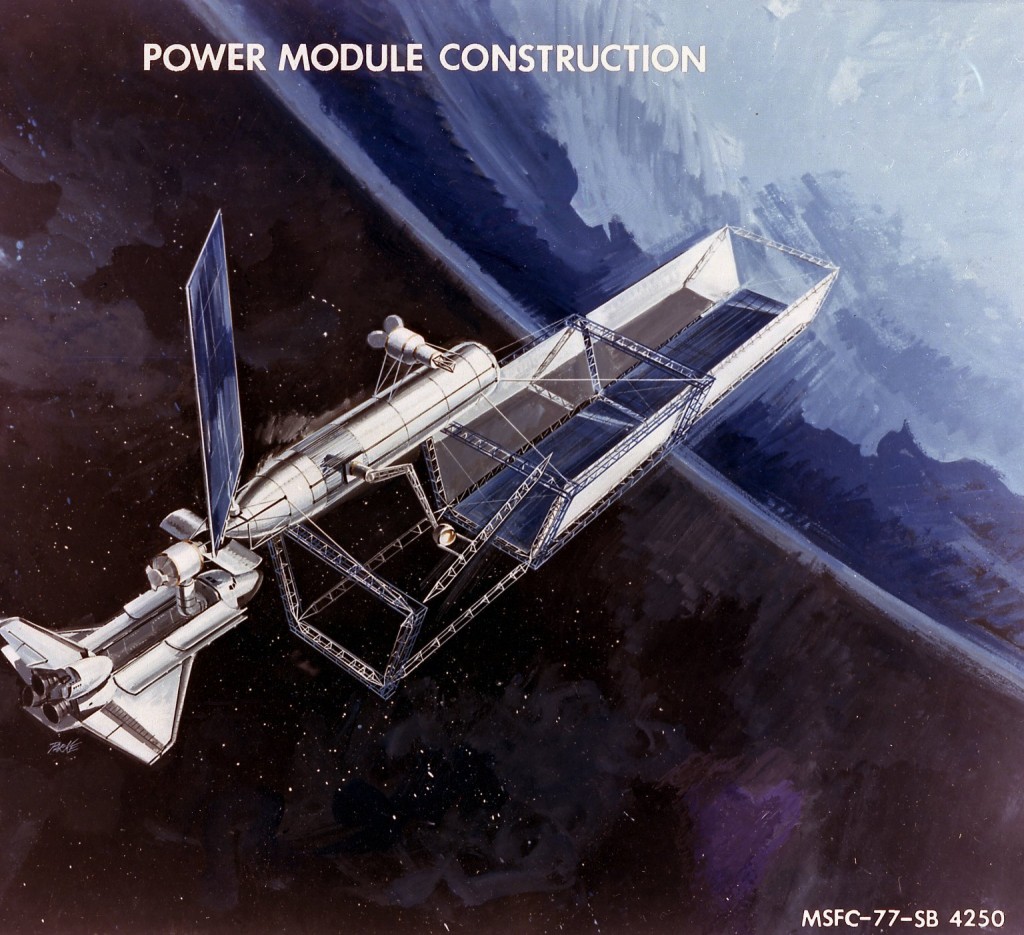A NASA artists concept from 1977 showing the construction in low Earth orbit of a Power Module. This would be one of a *vast* number to be assembled; when finished they would be hauled up to geosynchronous orbit there to be assembled together into very large Solar Power Satellites. This design is shaped like a trough, with the bottom of the trough covered in photovoltaic cells; the sides of the trough would probably be extremely thin aluminum foil. The foil would reflect more sunlight onto the cells. This was done because thin aluminum is a whole lot cheaper *and* lighter weight than solar cells; additionally, these cells tend to operate slightly more efficiently at higher insolation levels (i.e. the more sunlight they get, the better they work).
This painting shows a Shuttle External Tank being used as the backbone of a Power Module construction base. At the nose of the ET is a small “Space Lab” for crew (with possibly more crew space within the LOX tank), and a large solar panel for power. Further down the side of the ET is a movable manipulator arm; at the end of the arm is what appears to be a manned pod which serves as the “hand.” The arm appears to have rails that run the length of the ET, allowing it to slide back as forth as needed. Further down the ET is the “beam builder,” a self-contained little factory that takes rolls of aluminum “tape” (the two “Mickey Mouse ears” on the back of the device) and forms and spot-welds the tape into large structural elements.
